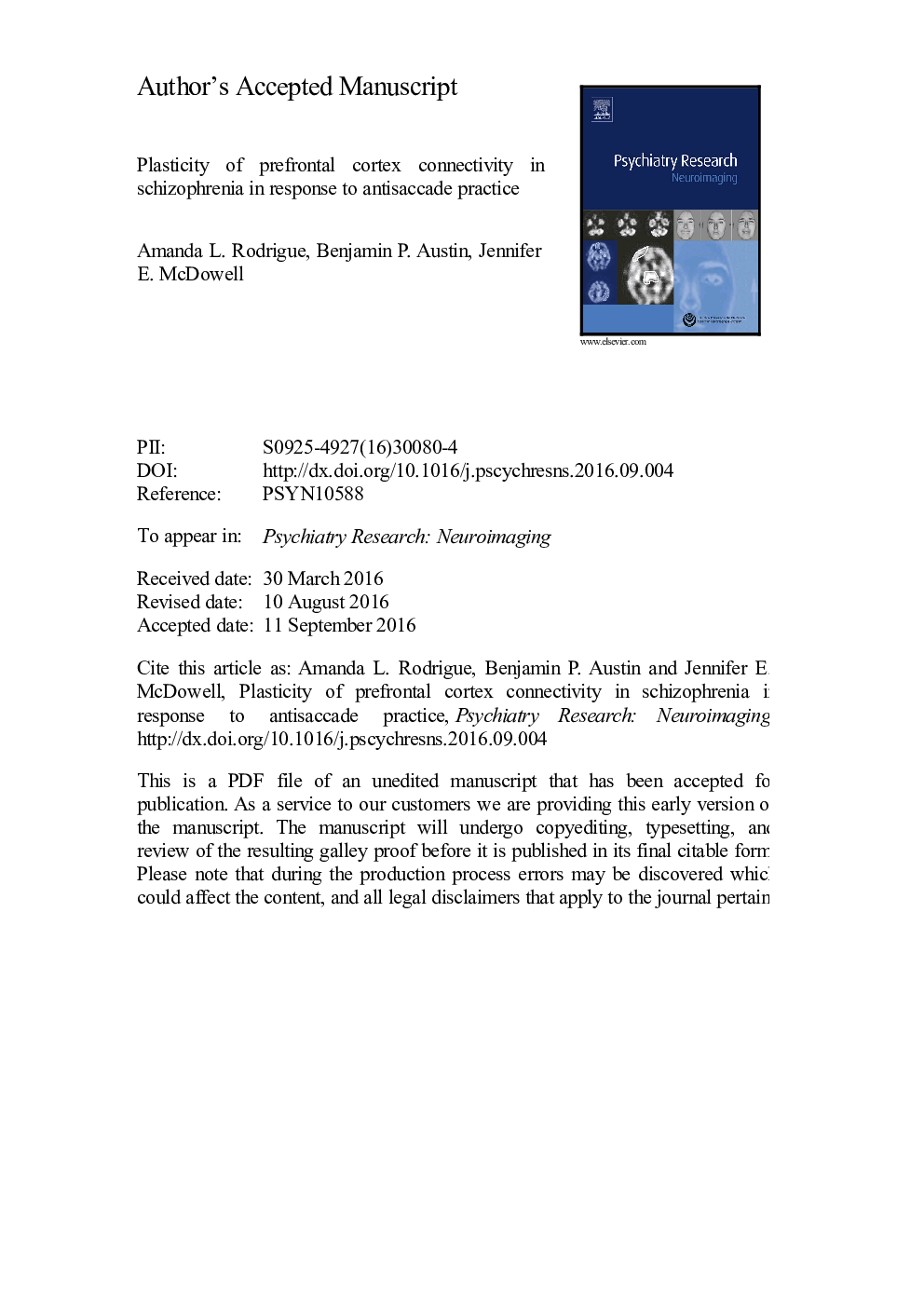| Article ID | Journal | Published Year | Pages | File Type |
|---|---|---|---|---|
| 4933902 | Psychiatry Research: Neuroimaging | 2017 | 36 Pages |
Abstract
People with schizophrenia exhibit difficulties in cognitive control that are often attributed to deficits in prefrontal cortex (PFC) circuitry. Practice paradigms have been used to improve these PFC-mediated deficits. The neural consequences of practice on task-based PFC activation have been addressed. Effects on task-based PFC connectivity, however, are largely unknown. We recruited people with schizophrenia and controls to practice antisaccades, a measure of PFC-mediated cognitive control that is disrupted in people with schizophrenia. Subjects performed antisaccades during functional magnetic resonance imaging (fMRI) before and after eight days of antisaccade practice. A group (schizophrenia, controls) Ã time (pre-, post-test) repeated measures ANOVA on the results of a psychophysiological interaction (PPI) analysis was used to evaluate changes in PFC connectivity; a similar model was used to evaluate changes in antisaccade behavior. After practice, antisaccade behavior improved and PFC connectivity with insular/temporal regions (involved in bottom-up orienting processes) increased in the schizophrenia group. The level of connectivity at post-test in the schizophrenia group was similar to that seen at pre-test in controls and positively correlated with antisaccade performance. Increases in connectivity between bottom-up and top-down regions may underlie behavioral improvements in people with schizophrenia after cognitive control practice.
Related Topics
Life Sciences
Neuroscience
Biological Psychiatry
Authors
Amanda L. Rodrigue, Benjamin P. Austin, Jennifer E. McDowell,
